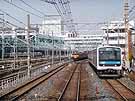
Entering Omiya station, the northern-most end of the service, from the front of a north-bound train. Omiya, being situated in the central district of commerce and culture of Saitama prefecture, is a busy railway junction where the Tohoku Main Line (Tohoku Line) and Takasaki Line branch, each paralleled by the Tohoku and Joetsu Shinkansen, respectively. Also the Kawagoe Line converges from the west and diverges to the southwest along with the Tohoku Shinkansen route, turning its service over to the Saikyo Line which paralles the Shinkansen route. The private railway coming into this station is the Tobu Noda Line from the east.
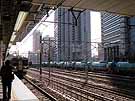
A view from a platform of Saitama-Shin-Toshin (Saitama New City Center) station, a new station next to Omiya opened in 2000 to serve the new city center complex developed in the vast land of the ex-Omiya freight yard. The area was spotlighted recently as the city center of newly born 'Saitama' city, which emerged in May 2001 as a result of a merger of three local cities (Omiya, Urawa and Yono). To the west of the station is still a rail yard for freight operation, which seems to be the remainder of the ex-Omiya freight yard complex. Beyond the rail yard are some tall buildings looking down on the new station that comprises two island platforms for the Tohoku/Takasaki Line and the Kehin-Tohoku Line.
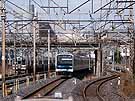
A view looking to the north from Minami Urawa. The JR Tohoku Main Line cutting across this area is well structured and consists of three double tracks without any level crossings, which serve, from the west, freight, middle-distance passenger and the Keihin-Tohoku commuter trains. The line continues in this form crossing over the Ara River to enter Tokyo metropolitan prefecture.
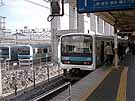
Higashi (East)-Jujo station is located under the tall viaduct of the Tohoku Shinkansen. On the left are 209 series trains resting in Shimo-Jujo depot's stabling sidings
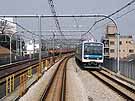
A view from the front of a north-bound train at a point north of Kaminakazato. The track in the area has been upgraded as a result of recent track improvements.
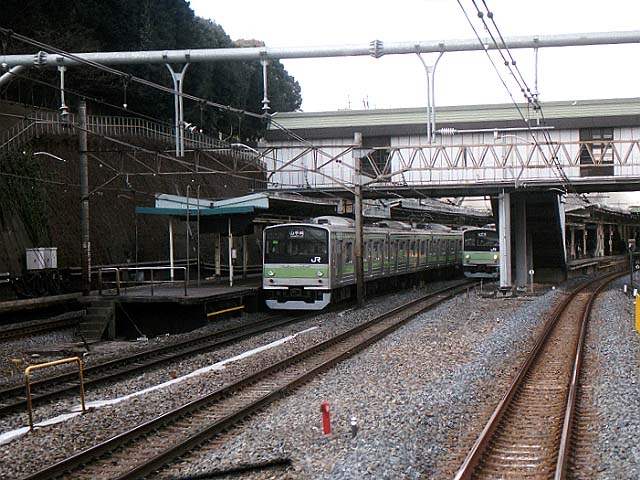
The Yamanote Line's circular service parallels the Tabata to Shinagawa segment. This segment consists of two double tracks dedicated to the Keihin-Tohoku and Yamanote Lines respectively. Between Tabata and Tamachi, the Yamanote Line uses the inner two tracks while the Keihin-Tohoku Line runs along the outer two tracks.
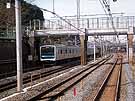
A view between Uguisudani and Ueno from the rear of a south bound-train. From Tabata, the Yamanote and Keihin-Tohoku Line tracks run down following the foot of a low cliff. Geographically, this is the eastern edge of Musashino Plateau, on which Tokyo city was developed. The sea used to come up to the cliff in ancient times. The cliff continues as far as Ueno.
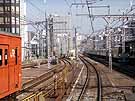
The Chuo Line comes from the west to join the Yamanote/Keihin-Tohoku track at Kanda and they follow each oher as far as Tokyo station.
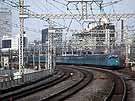
A 103 series train rolling down a sweeping gentle curve between Tokyo and Yurakucho.
April 1992, by Kiyohito Utsunomiya.
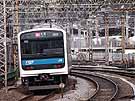
A north-bound train rolling up towards Tokyo station at Yurakucho. Seen in the background is the Shinkansen's Tokyo station.
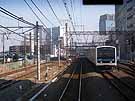
A view from the front of a north-bound train looking towards Kawasaki. The Tokyo-like view with tall buildings continues even after entering the Kawasaki city area.
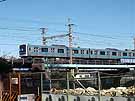
A down Keihin-Tohoku train rolls on an embankment between Negishi and Isogo on the Negishi Line section south of downtown Yokohama, January 2002.